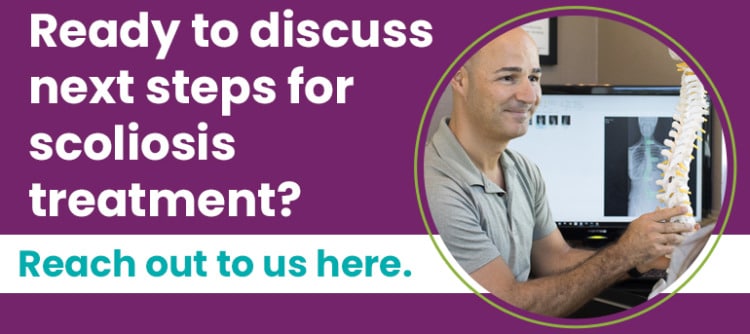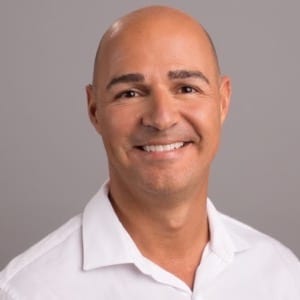Understanding Scoliosis Surgery Options for Adults
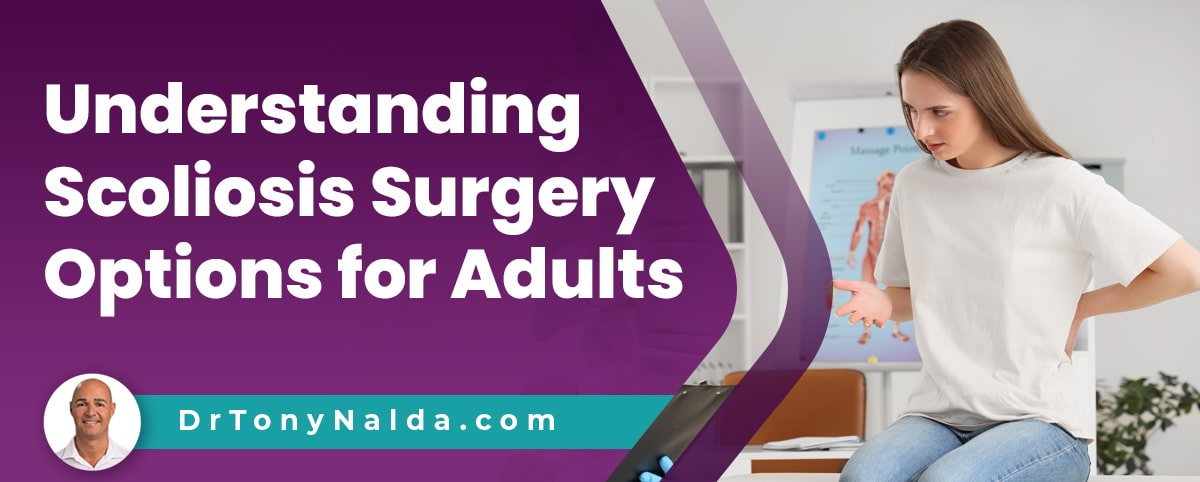
What I want my adult scoliosis patients to understand most of all is that not all cases of scoliosis require surgical treatment. While some particularly severe and/or atypical types can require more invasive forms of treatment, many patients can experience condition improvement without facing the risks of surgery.
Scoliosis surgery isn't the only treatment option for adult patients; non surgical conservative treatment offers a less invasive option that's better for long-term spinal health. Scoliosis surgery risks increase with age, while conservative treatment protects the spine's natural function and strength.
While the goal of treating adult scoliosis can differ from that of childhood scoliosis, in many cases, conditions can be improved for a better quality of life.
Table of Contents
Adult Scoliosis
Scoliosis causes the spine to bend and twist unnaturally, and while scoliosis is more often diagnosed in children, it also affects adults; in fact, the actual rate of scoliosis increases among the aging population, and this is due to natural age-related spinal degeneration.
Adult scoliosis is diagnosed through a physical examination and scoliosis X-ray results. In order to be considered a true scoliosis, the spine has to bend unnaturally to the side and also rotate, making it a 3-dimensional condition.
Part of diagnosing scoliosis involves comprehensively assessing conditions for further classification based on key patient/condition variables such as patient age, curvature location, condition severity, and type.
As you can see, there can be a lot of variability within the condition and how it affects a patient's life, and when it comes to condition type, we're talking about causation.
One of the most interesting things about scoliosis is that despite its occurrence since ancient times, we still don't know what causes the most common type to develop initially: idiopathic scoliosis.
Idiopathic scoliosis has no known cause and accounts for approximately 80 percent of known cases, and the remaining 20 percent are considered atypical types with known causes: neuromuscular scoliosis, congenital scoliosis, and degenerative scoliosis.
So what's the main type of scoliosis to affect adults?
Idiopathic Scoliosis in Adults
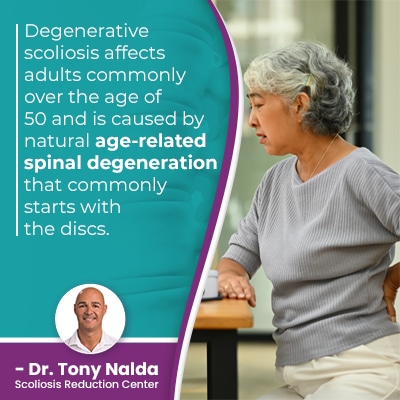 Idiopathic scoliosis is the most common type to affect all ages, and the most prevalent type of scoliosis overall is adolescent idiopathic scoliosis diagnosed between the ages of 10 and reaching skeletal maturity.
Idiopathic scoliosis is the most common type to affect all ages, and the most prevalent type of scoliosis overall is adolescent idiopathic scoliosis diagnosed between the ages of 10 and reaching skeletal maturity.
As childhood scoliosis isn't always noticeable and easy to diagnose, it's not an uncommon scenario for an adolescent to go through their teenage years with scoliosis unaware.
When mild, the effects of scoliosis can be subtle and difficult to detect, particularly in children as the condition doesn't become compressive until skeletal maturity has been reached, and this is when compression causes pain felt in the back and radiating into the extremities.
So an adolescent can be experiencing mild progression that goes unnoticed, until enough progression has occurred and the condition has become compressive, and then becomes painful: alerting them to the need for assessment and diagnosis.
So the prevalence of idiopathic scoliosis in adults is a reminder of how beneficial early detection can be, in terms of preventing progression and increasing condition severity.
After idiopathic scoliosis, the next most common type to affect adults is degenerative scoliosis.
Adult Degenerative Scoliosis
Degenerative scoliosis affects adults commonly over the age of 50 and is caused by natural age-related spinal degeneration that commonly starts with the discs.
The spine's intervertebral discs sit between adjacent vertebrae, and each disc provides cushioning between adjacent vertebrae, preventing friction and uneven wear and tear.
The discs also provide the spine with structure as adjacent discs attach to the disc in between, and when they combine forces, the discs also facilitate a wide range of flexibility and range of motion.
The discs also act as shock absorbers to help the spine absorb and distribute mechanical stress during movement.
Disc degeneration can involve a disc becoming desiccated and changing shape as a result, and this can disrupt the position of adjacent vertebrae attached, not to mention disrupting the spine's function in the area; as one long structure, it's important to understand that a misaligned portion or section of the spine will affect the entire spine.
If one or more vertebrae shift out of alignment with the rest of the spine, the biomechanics of the entire spine are disrupted, and this doesn't just affect the spine, but the entire body.
A spine that's experiencing degenerative changes is one that's unbalanced and unstable, often with a lot of movement occurring where it shouldn't, making degenerative scoliosis particularly painful.
So what about surgery for adult scoliosis? What are the pros and cons?
Scoliosis Surgery Risks for Adults
Scoliosis surgery is at the center of a traditional treatment response and is a type of spinal fusion.
All surgical treatment comes with its share of potential risks and complications, and spinal surgery is no exception.
As progression occurs and the size of the unnatural spinal curve increases, the spine gets increasingly rigid, making it less responsive to treatment, hence the benefit of a proactive treatment plan implemented immediately following a diagnosis.
The process of spinal fusion can vary, but in generally involves identifying the most unnaturally-tilted vertebrae at the curve's apex, removing the disc sitting between adjacent vertebrae to be fused, fusing the vertebrae into one solid bone, and attaching metal rods to the spine to maintain its alignment.
Risks associated with spinal fusion can include increased pain at the fusion site, nerve damage, less flexibility in the spine, and a spine that's weaker and more vulnerable to injury.
If a fusion fails or an adverse reaction to hardware used occurs, the only recourse is more surgery, and the risks increase with each subsequent procedure and increasing age.
While spinal fusion surgery for adult scoliosis can still have a place in particularly severe and/or atypical cases, many adults with scoliosis can experience noticeable condition improvement with non surgical treatment options.
Non Surgical Treatment for Adult Scoliosis
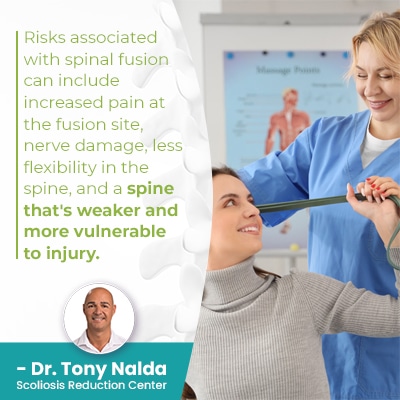 When it comes to a diagnosis of adult scoliosis, the most important decision involves how to address the condition with treatment, and conservative treatment offers an alternative to surgery.
When it comes to a diagnosis of adult scoliosis, the most important decision involves how to address the condition with treatment, and conservative treatment offers an alternative to surgery.
When it comes to an adult's spine, it's vulnerable to compression and increasing rigidity, and for this reason, while large curvature reductions are the goal of childhood scoliosis treatment, the goal of a scoliosis specialist treating adult scoliosis is more about increasing spinal support and stability.
Curvature reductions in adult scoliosis are less about counteracting the progressive trigger of growth as in childhood scoliosis treatment, and are more about reducing curve sizes back to where they were prior to becoming painful.
Degenerative scoliosis, in particular, can make the spine increasingly balanced and unstable, which is associated with dangerous falls and serious injury, so a focus of treatment is increasing spinal support and stability so there is less movement within the spine.
Gentle manual chiropractic adjustments can help work towards improving the spine's alignment, while physical therapy and scoliosis-specific exercises can help improve the spine's surrounding muscle balance and strength.
Strong and balanced back muscles mean a spine that doesn't have to work as hard to maintain its natural curves and alignment.
Corrective bracing can also be applied for short-term stability improvements and pain relief.
Conclusion
Adult scoliosis is diagnosed once skeletal maturity has been reached and the two most common types of scoliosis to affect adults include idiopathic and degenerative scoliosis.
As progression is triggered by growth, a focus of childhood scoliosis treatment is on counteracting rapid progression while growth is occurring; while adults with scoliosis don't tend to progress quickly due to the absence of growth, progression still occurs, particularly once age-related spinal degeneration occurs.
When it comes to scoliosis surgery for adults, we're talking about spinal fusion that has the goal of stopping progression by fusing its vertebrae and maintaining the spine's position through hardware attached, but this is contrary to the spinhe's movement-based design.
Many adult patients are disappointed with the loss of spinal flexibility they are left with as this can lead to activity restrictions, and the knowledge of living with a spine that's more vulnerable to injury can also have a psychological impact that shouldn't be discounted.
The best way to manage scoliosis symptoms is to treat the condition proactively, and in many cases, increasing condition severity and escalating symptoms can be prevented, as can the need for future surgical treatment.
A spine that bends unnaturally side to side is one that's not going to function optimally, and as a progressive condition, the best time to start adult scoliosis treatment is always now.
There are never guarantees, but here at the Scoliosis Reduction Center®, the ultimate treatment goal is always to improve quality of life for my patients, and in adult scoliosis, this means providing more spinal support and stability while preserving existing spinal strength and function.
Dr. Tony Nalda
DOCTOR OF CHIROPRACTIC
After receiving an undergraduate degree in psychology and his Doctorate of Chiropractic from Life University, Dr. Nalda settled in Celebration, Florida and proceeded to build one of Central Florida’s most successful chiropractic clinics.
His experience with patients suffering from scoliosis, and the confusion and frustration they faced, led him to seek a specialty in scoliosis care. In 2006 he completed his Intensive Care Certification from CLEAR Institute, a leading scoliosis educational and certification center.
About Dr. Tony Nalda
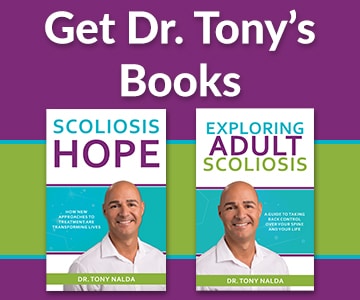 Ready to explore scoliosis treatment? Contact Us Now
Ready to explore scoliosis treatment? Contact Us Now